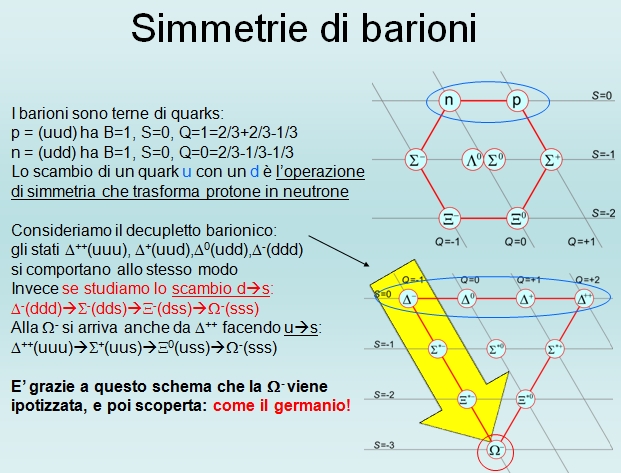Today I spent the better part of the afternoon in the company of 150 high-school students at the Liceo Fermi in Padova, giving a seminar on particle physics in the context of a project called "Masterclasses" which has been active since 2005 and is a big success.
The project aims at students in the last years of their high school and attempts to involve them in the experiments undergoing at the CERN laboratories. Sets of lectures on particle physics and cosmology at the schools are followed by a "hands-on" session at the Physics Department, where students are taught and then tested in recognizing heavy particle decays from event displays.
Until two years ago, the data came from the LEP II experiments; but now students work with fresh data from the CMS experiment at LHC.
My lecture was an introduction to particle physics, and lasted 1.5 hours. Rather than trying to concentrate on the very few concepts that can reasonably be absorbed in that short time span by the typical student, I decided to give a crash course where I touched on the most important developments of particle physics from its birth - Thomson's and Rutherford's experiments, the discovery of the first hadrons, etcetera- to the hypothesis of quarks, the birth of the standard model, and the higgs mechanims.
The choice of showering students with an amount of material they cannot possibly absorb is not too foolish. The purpose is not to teach them stuff, as much as to get them curious and willing to learn more, something they have a chance to do e.g. when they design the short research papers they have to produce for their diplomas.
I have some experience with the kind of seminar I gave today: I had given not too different versions of the same talk in at least four or five occasions in the recent past. So I was accustomed to the progressive decrease in attention of a percentage of the students; however, I managed to keep with me until the last slide the majority. That is, I think, a respectable success.
The seminar gave me the occasion to meet the professor who organized the event in the school, Renato Macchietto. As is fortunately not infrequent, I found in him a well-prepared teacher, full of enthusiasm and good will to help his students grow by learning physics. I was quite interested to learn that under his lead his students participated in a NASA project to program the movements of robotic devices for the international space station - and they got the second place in the international competition among schools!
So, while work was piling up in my absence, I can say I did not waste my time.
Below is one sample slide from my talk (in Italian of course): I am sure that the concepts discussed will not sound too trivial even to those of you who regularly read this blog. The slide discusses representations of the group of symmetry of flavour SU(3), the group which describes states obtained by the combination of three quarks or antiquarks.
The point I try to drive home here is that by using classification, physicists understand more about the properties of the objects they study, and infer properties about unknown elements -here the Omega minus, while earlier I was discussing Mendeleev's hypothesis of eka-germanium.

After the talk I invited the students to visit this site, with the hope that they will find it interesting to dig in the archive of posts and find stuff that can be of interest to them.
That also reminds me: I hope I will soon be able to fulfil an old promise of producing a commented list of links to the most interesting "evergreen" posts I wrote in the course of the last few years... For the time being, he who seeketh will findeth.



Comments